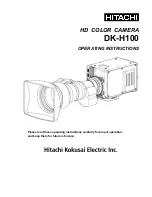
Oculus handbook Issue 2 January 2013
Once the position and focus are good, try running an image sequence in ‘Autosave’ mode. An exposure
time of 30 seconds is generally good for basic sky monitoring, but shorter exposures might be better to
minimise sky glow when meteor imaging. Set up a suitable number of image frames in the ‘No. of
exposures’ box and check the ‘Autosave’ box. Pressing the ‘Take Photo(s)’ button will now start a
sequence and save the images as FITS files into your chosen Autosave folder. Clearly, a lot of images
will occupy a great deal of hard disk space, so make sure that you have plenty available! The maximum
autosave number for AVI creation, is 1000 images and this will cover about 8 hours of 30 second
frames, while filling about 1GB of hard disk space. For tidiness and avoiding any mixing of old and
new images, I recommend pressing the ‘Empty current directory’ button before starting your sequence.
If you want to keep a previous session of saved images, you must move them to another folder
before starting a new sequence with the Oculus.
Your images will be saved in the Autosave folder as
numbered FITS files – IMG1.FIT, IMG2.FIT etc. and will be added to any that are already there.
Most users will probably not need dark frame subtraction to get a satisfactory result, but this option is
available if you need to suppress any hot pixels etc. Cover the Oculus dome with a black cloth or
opaque container and then take an exposure to match the length being used in your image sequence.
The resulting dark frame should be saved to c:\dark.def and the ‘Auto remove dark frame’ check box
selected in the camera menu. The dark will then be subtracted from all future images. Note that the
dark noise is temperature sensitive and so you will get cleaner images if the Oculus is cold
Unfortunately, if the air is humid, this is also likely to lead to dew or frost forming on the dome, so you
might find that running with the heater on is often necessary, and this is where dark frame subtraction
can be particularly useful. Another option is to create a ‘Hot pixel map’ and apply this to your images
when creating an AVI file and this will be described below.
After an imaging session, you will probably want to view a movie of the entire sequence to look for
interesting events. This is easily done by creating an AVI file from the stored FITS images. Open the
‘File’ menu and select the ‘Create AVI from FITS files’ option. The best results will be obtained if you
adjust the visualisation of a sample image to give the best view, using the Max palette stretch options in
the ‘View’ menu. Adjust the brightness and contrast to give a nice result and then run the AVI create.
The program will use your view settings on all the images while creating the movie file. The AVI



























